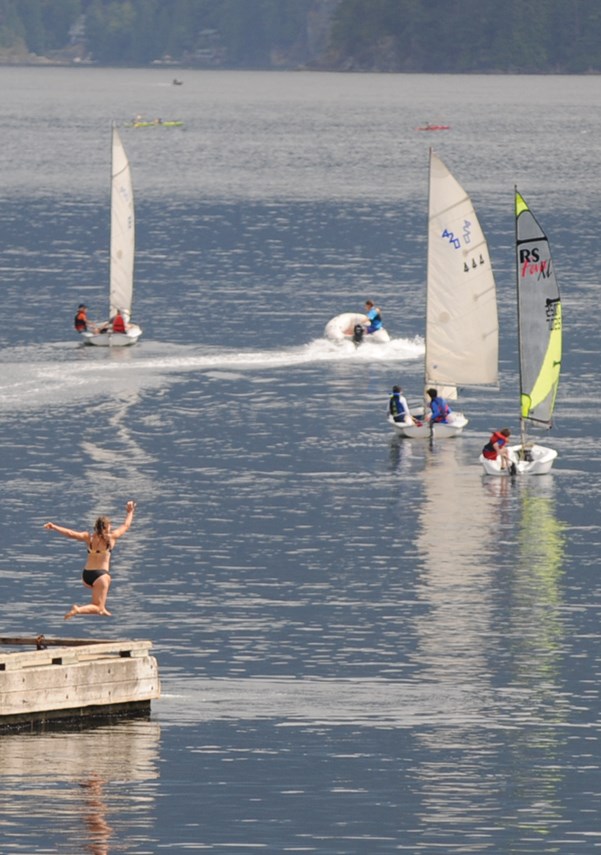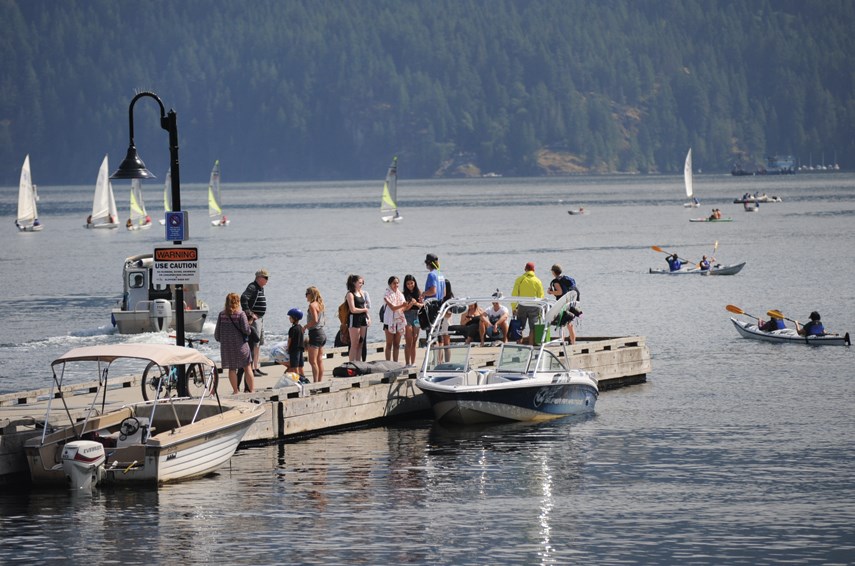Boaters. Swimmers. Stand-up paddleboarders. Kayakers. Seekers of wide-open spaces after months of being cooped up at home.
The summer of 2020 is drawing people outside in numbers not often seen before. Now that “stay home” directives have widened to “stay in your neighbourhood” as the province attempts to quell the spread of the coronavirus, it seems like everyone in Metro Vancouver is looking for a place to unwind outdoors.
Many of them are heading to Indian Arm.
“It’s kind of wacky how many people are out there,” says Erian Baxter, co-owner of the Deep Cove Kayak Centre. “We understand why there are so many more people out on the water but there’s just so much more boat traffic and it’s so much faster. We’ve always been concerned on weekends and sunny days but now it’s every day.”
And it’s not just boaters who are turning up the volume in the narrow stretch of water that cuts through Mount Seymour Provincial Park, she says. People are so eager to spend time on the water that if they don’t have a boat, they’re making do with virtually anything that floats, including pool toys.
“If people would reduce their speed it will make life easier for everyone,” says the rental centre’s operations manager, Mike Derbyshire.
Fast boats can present a dual threat: they might not see kayakers, paddleboarders or swimmers and, long after they’re gone, their wake can knock human-powered recreationists into the water.
“As a paddler,” Derbyshire says, “I’m not so much bothered by the waves. It’s mostly the proximity. It starts to be concerning when you’re paddling along and you’re not sure if the boat coming towards you sees you or not, and they’re getting closer. If they’re not slowing down the way you want them to, it makes you uneasy.”
In parts of Indian Arm, the speed limit is 10 knots, or about 18 kilometres an hour. It’s five knots around Deep Cove. However, as Sgt. Peter DeVries of the North Vancouver RCMP notes, sometimes the rules say “no wake.” That’s because the size of wake can be influenced by speed but also has a lot to do with a boat’s displacement. A large boat can go five knots and create a bigger wake than a small boat going 10 knots. The onus is on large boats to go a speed that creates no wake, whether it’s one knot or five.
Wake is not only a risk to other people out on the water but it also damages shorelines and shoreline property owners’ docks.
While boat traffic, speed and inconsiderate behaviour of a small number of people are driving up safety concerns, the RCMP has not seen an increase in the number of formal complaints, DeVries says. The RCMP has one marine boat that does unscheduled patrols and responds to complaints and emergency calls. DeVries encourages people to take down the registration information of problem boats and report them to the RCMP. This would give the RCMP a better idea of the level of demand for patrols.

Mike Derbyshire for one would like to see more of a police presence. “Whenever the RCMP or Coast Guard boat is out there, other boaters slow down. The more presence they have, the more cautious people are.”
In the meantime, the RCMP is proactively raising awareness about the dangers of – and rules about – drinking on a boat. “Most of society frowns quite readily on drinking and driving, but there’s a little less cultural acceptance of the idea that boating and alcohol don’t go together,” DeVries says.
It’s not just police who are concerned about drinking on boats. When people drink alcohol, they get louder and might not realize how much noise travels on water. They also need to pee and might not feel as inhibited about peeing into the water as they would if, say, they were walking along a sidewalk in a residential neighbourhood. There have also been reports of gatherings on party boats where, outside on the deck or not, people aren’t adhering to physical distancing rules.
Opinions vary about why there are more displays of bad behaviour — although people the North Shore News talked to said the majority of people on the water are being respectful of others. A widely shared view is that people are heeding the imperative to stay closer to home; they aren’t trailering their boats to other locales or causing concerns about the spread of the coronavirus amongst residents of shoreline communities up the coast. Boat sales have increased and rentals are popular. Not every new boater — or paddleboarder or pool-noodler, for that matter — is aware of the rules on the water.
Derbyshire is hesitant to lay blame on any one group. He knows that boaters can get equally upset with paddleboarders and kayakers, which is why each rental includes a tutorial on etiquette and the rules.
“Everyone has to do their part including paddlers who should stay along the shoreline and not linger in the middle of the channel where the bigger boats go,” he says.
As a boater himself, the RCMP’s Peter DeVries offers some advice to people who understandably want to get out on the water this summer. “People just need to take [provincial health officer] Bonnie Henry’s advice at large, not just about how it relates to COVID. Be calm. Be kind. Be safe. It applies to a lot of different areas in life.”
Martha Perkins is the North Shore News’ Indigenous and civic affairs reporter. This reporting beat is made possible by the Local Journalism Initiative.



